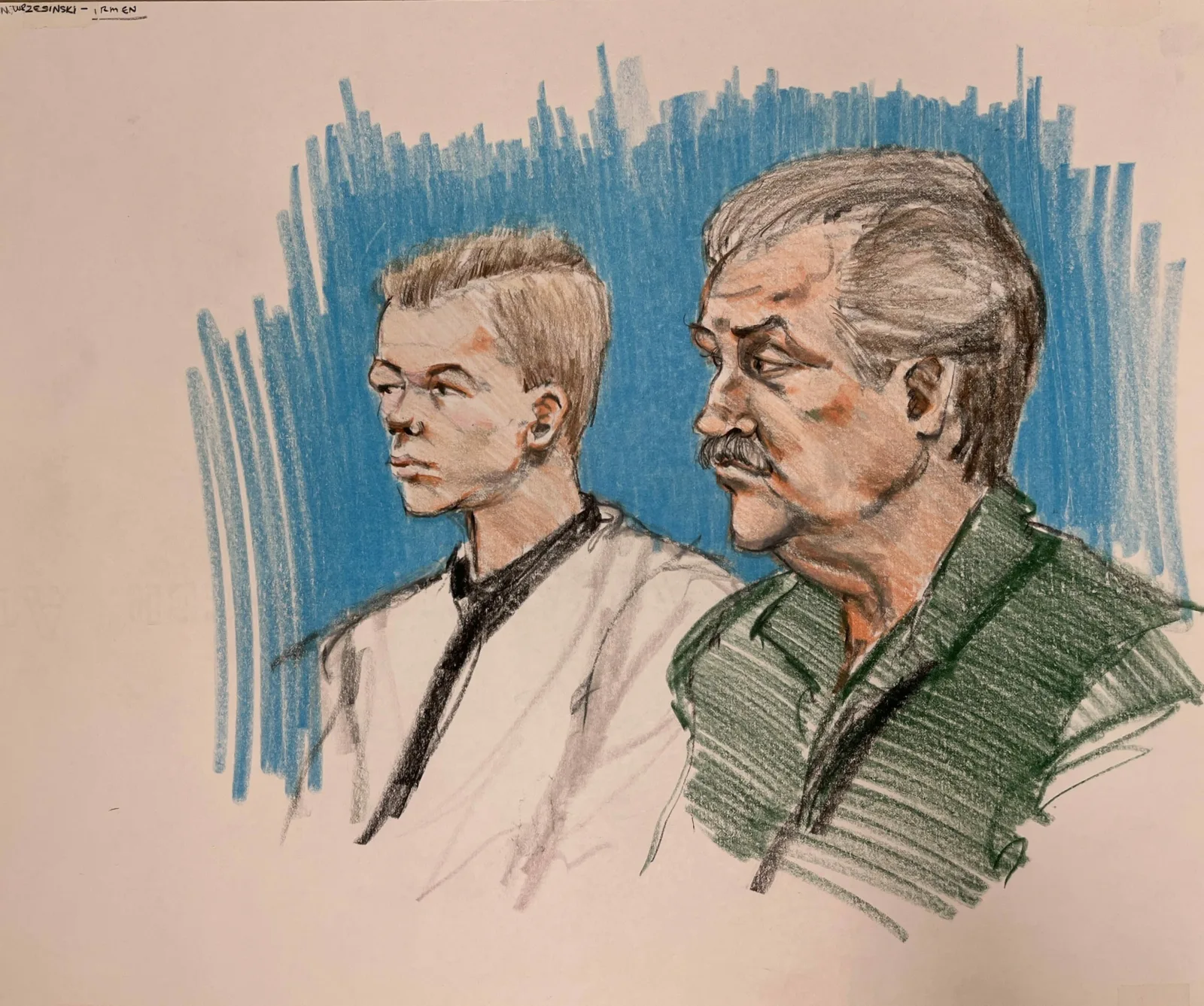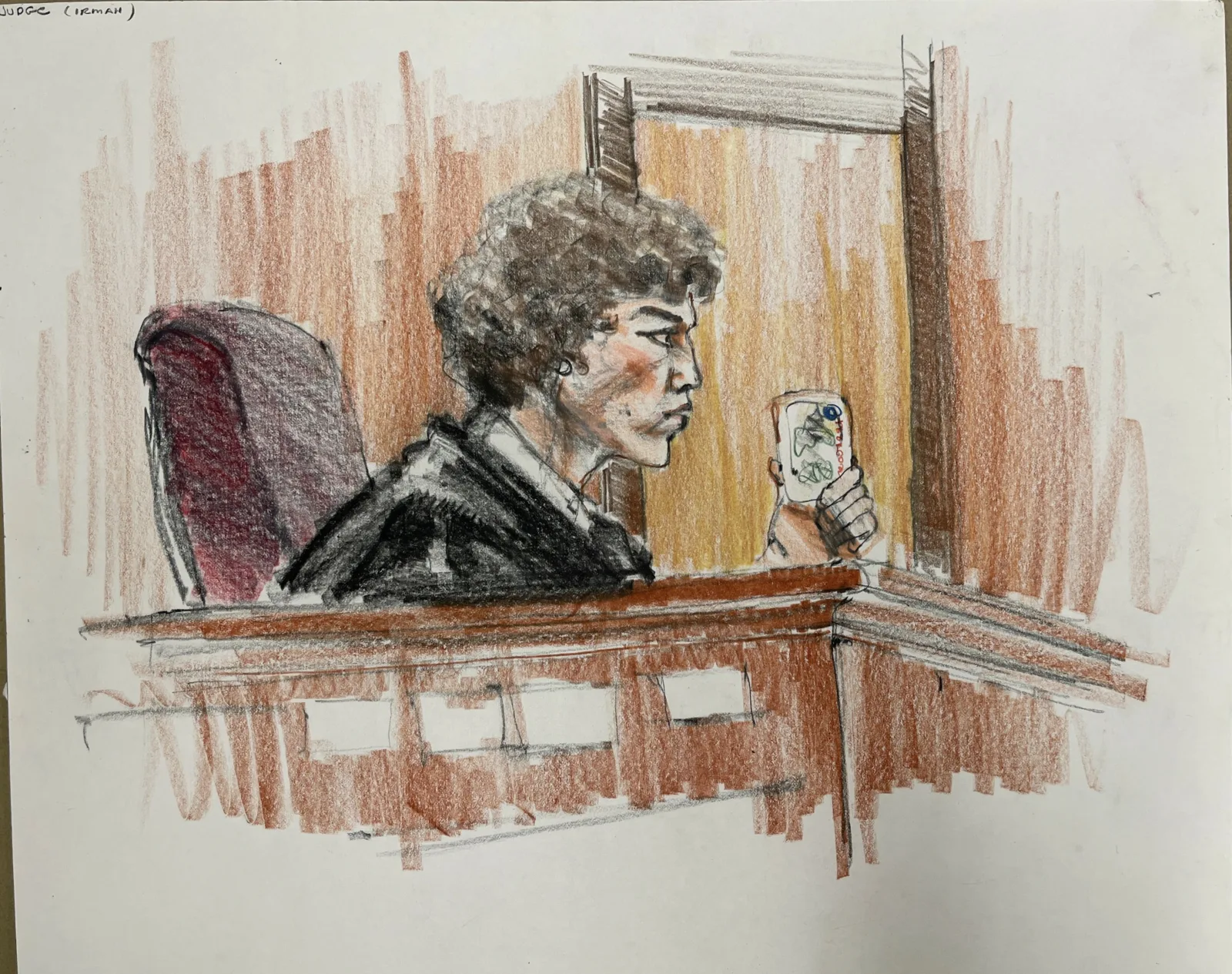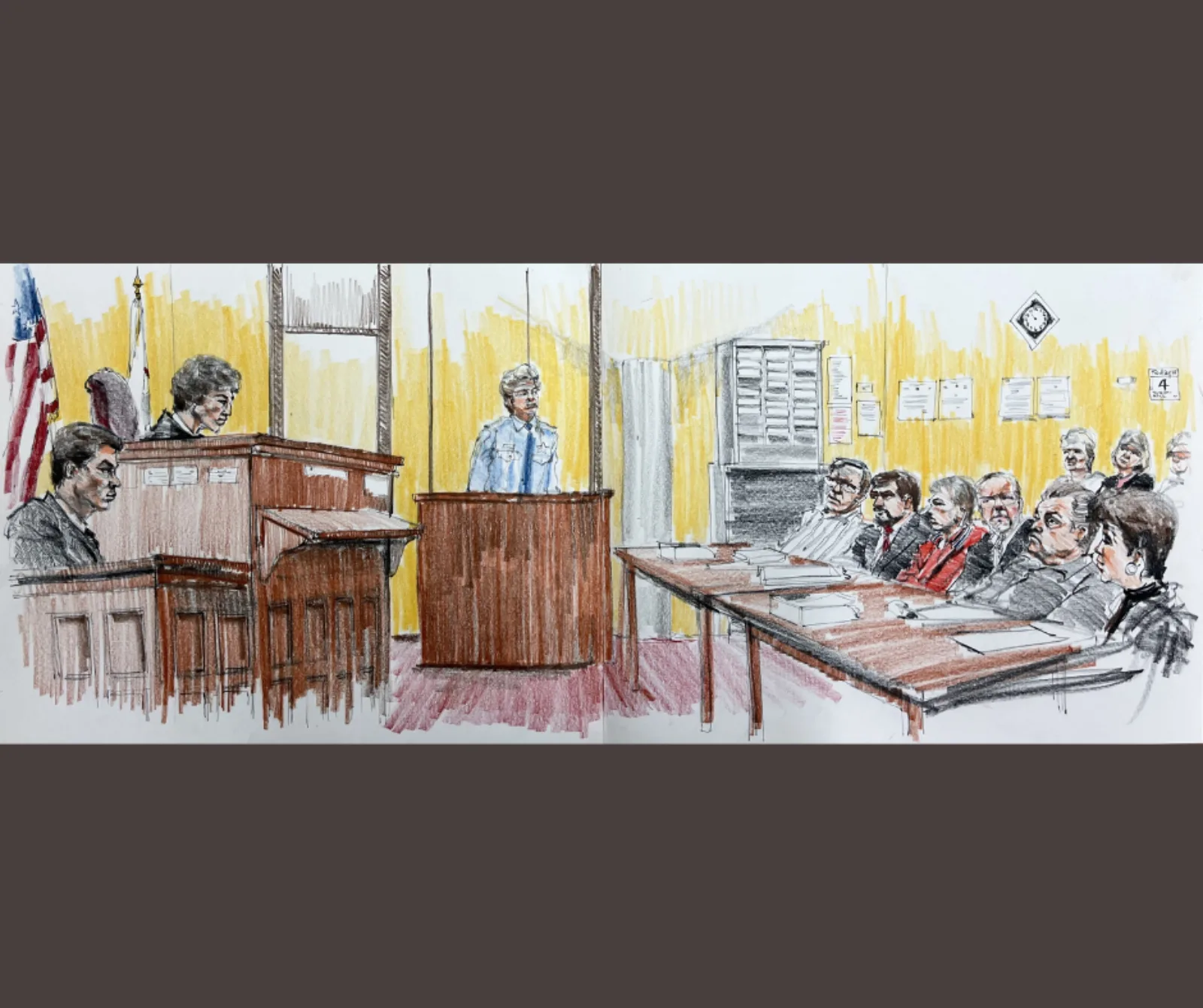Throughout her 40-plus-year career as a courtroom artist, Marcia Danits has sketched many a household name — everyone from politicians (Rod Blagojevich, George Ryan) to celebrities (Michael Jordan, Michael Jackson) to notorious serial killers (John Wayne Gacy). These familiar faces, however, are nestled between thousands of lesser-known individuals, appearing in court for a vast assortment of criminal and civil matters.
The Marcia Danits papers were gifted to the Newberry by the artist in 2023. As a Project Archivist I’ve had the privilege of processing the collection and, while doing so, learning about many of the people and cases represented therein. All of them deserve to have their stories shared, whether the cases were front-page news or instead reflect, to use Howard Zinn’s words, “the lives, desires, needs, of ordinary people.” That is why it seems worthwhile to flash backwards to 1990 and explore the lawsuit Joe Irmen filed against 12-year-old Brian Wrzesinski. That, and the beginning of the Major League Baseball season.

In April 1990, Wrzesinski was shopping at Ball-Mart in Addison, Illinois, a baseball card shop owned by Irmen. An avid collector with 40,000-50,000 cards to his name, Wrzesinski came across a coveted 1968 “rookie card” (the first card featuring a player) of then-Texas Rangers pitcher Nolan Ryan. The November 1990 issue of Beckett Baseball Card Monthly listed the price of the card at between $800-$1,200. At Ball-Mart, the price tag simply read “1200,” which an inexperienced clerk took to mean $12 rather than the $1,200 that Irmen had actually priced the card at. Accordingly, Wrzesinski walked out of the store with the deal of a lifetime. Irmen realized the mistake several days later when a group of kids came in inquiring about additional $12 Ryan rookie cards. He tracked down Wrzesinski and claims to have offered him $100 for the card, which was turned down. He then decided to take his case to court.
“It’s strictly a contract law,” said Irmen’s attorney Bud Loftus in the Chicago Tribune. “If a bank sends you a check for $2,000 when it should have been $20, you can’t say it’s their mistake and keep it… Sympathies are probably with the kid, but we look at it as a matter of the law.”

Irmen’s suit began hearings in December 1990 before Judge Ann Jorgensen, one of several figures who appear throughout Danits’ sketches of the Wheaton, Illinois trial. The following March, the case was ongoing when Wrzesinski stunned the courtroom by revealing that he had traded the Ryan rookie card to an unnamed collector in exchange for a 1965 Joe Namath rookie card and a 1967 Tom Seaver rookie card. Such an unprecedented development forced Judge Jorgensen to immediately order attorneys for both parties into her chambers. The Tribune reported that as Irmen left the second-floor courthouse with his attorney Karen Delvaux, he asked: “Want to jump or take the elevator?”
The next month, however, all parties had reason to feel jovial rather than despondent. After four months of legal battle, which included Wrzesinski rescinding the trade, he and Irmen agreed to jointly auction off the card and donate the proceeds. The pair high-fived and shook hands for newspaper and television cameras. And that June, after $12 and $1,200 opening bids from none other than Wrzesinski and Irmen, respectively, the Ryan rookie card that started it all was auctioned off for $5,000. Wrzesinski donated his half of the money to the Ronald McDonald House, while Irmen gave his to the Alhambra House of Chicago. What’s more, they both ended up with a doubly happy ending to the saga: Wrzesinski got to meet baseball star Wade Boggs after mentioning him in a TV interview, and Irmen’s wife Jackie bought him a Nolan Ryan game-worn Texas Rangers uniform in 1993.
The Marcia Danits papers include a dozen drawings from multiple hearings in the trial. In addition to featuring most if not all of the key participants (Wrzesinski, Irmen, Judge Jorgensen, Ball-Mart clerk Kathleen Braker, attorneys Walter Maksym and Karen Delveaux), the sketches depict moments that help color (literally) the proceedings. A two-panel sketch shows a large part of the courtroom, Wrzesinski seated across from the judge in a bright Palatine Reds jacket. In another, Judge Jorgensen holds up what appears to be a (the?) baseball card. In a third, Wrzesinski and Irmen sit beside one another, staring intently out of frame. Danits’s work overflows with such moments, ripe for (re)discovery and analysis.
About the Author
Ben Weinstein is a Project Archivist for the Modern Manuscripts and Archives Department at the Newberry Library.
